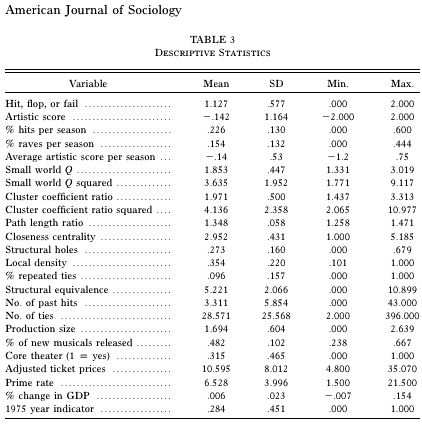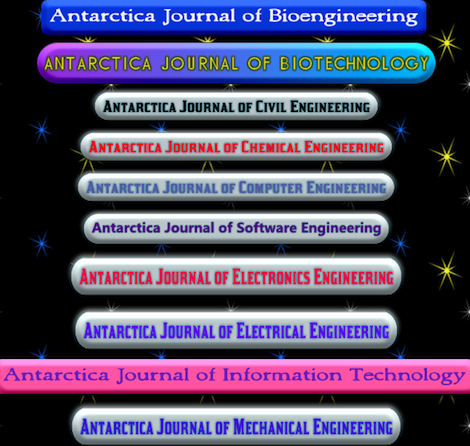Marc Abrahams's Blog, page 553
August 20, 2012
One month from today: The 2012 Ig Nobel ceremony!
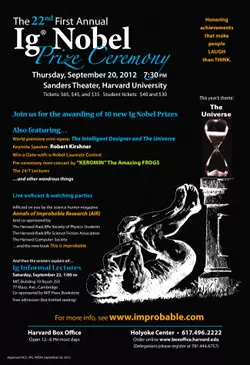 The 2012 Ig Nobel Prize Ceremony will happen exactly a month from today—on Thursday night, September 20, at Sanders Theater, Harvard University. Details are on the ceremony web page.
The 2012 Ig Nobel Prize Ceremony will happen exactly a month from today—on Thursday night, September 20, at Sanders Theater, Harvard University. Details are on the ceremony web page.
A few (only a few!) tickets are still available, exclusively from the Harvard Box Office.
BONUS: There will be parties around the world to watch the live Internet broadcast. The biggest, grandest party will be in Leiden, The Netherlands.
BONUS: For a larger version of the poster, click on the image, right.

To fail by looking at all ‘failed’ technology as failure
Maggie Koerth-Baker writes in BoingBoing:
”How the Refrigerator Got its Hum” is an article written by science historian Ruth Schwartz Cowan [pictured here]. It was published in 1985, in a book called The Social Shaping of Technology. The article traces the development of the refrigerator and the story of why we use electricity, rather than natural gas, to cool our food today. I couldn’t fit it into my NYT column, but it’s absolutely fascinating and well worth the read. The key point of Cowan’s article: Our world is full of “failed machines”, technologies that worked just fine, but that we don’t use today….
Cowan’s refrigerator hum article is online: ”How the Refrigerator Got Its Hum“. Among its many gems:
The case of thc gas refrigcratar appears, in many particulars, to be structurally similar to thc cases of many ather aborted or abandoned devices intended for the household…. The central vacuum cleaner, which technical experts preferred, quickly lost ground to its noisier and more curnbersome portable competitor, in part because of the marketing techniques pioneered by door-to-door and store-demonstration salesmen employed by such firms as Hoovcr and Apex.

Mathematicalistic Analysis of Broadway Collaboration Success
A 2005 study tried to use math techniques to analyze who was (and who will be) successful in building broadway shows:
“Collaboration and Creativity: The Small World Problem,” Brian Uzzi [Northwestern University] and Jarrett Spiro [Stanford University then, INSEAD now], American Journal of Sociology, vol. 111, no. 2, September 2005.
The authors analyzed the small world network of the creative artists who made Broadway musicals from 1945 to 1989. Based on original arguments, new statistical methods, and tests of construct validity, they found that the varying “small world” properties of the systemic level network of these artists affected their creativity in terms of the financial and artistic performance of the musicals they produced…..
Hypothesis.—The relationship between a network’s small world typology and performance is U-shaped. Specifically, the financial and artistic success of a production increases at medium levels of [the small world quotient] Q and decreases at either low or high levels of Q. The financial and artistic success of a season of productions increases at medium levels of Q and decreases at either low or high levels of Q….
DATA AND METHODS: Our data include the population of all 2,092 people who worked on 474 musicals of new material produced for Broadway from 1945 to 1989….
DISCUSSION: Consistent with [our] prediction, about 90% of the new shows were flops from 1919 to 1930. By comparison, in the 1945–89 period, when Q was around the bliss point, about 75% of the shows were flops. Thus, these data and tests, while only circumstantial, corroborated the U-shaped relationship for periods beyond the one studied.

August 19, 2012
Verbal Smell References In Radio Advertisements
 “You can almost smell the smoky and delicious aroma of your steak grilling to perfection” – says the radio ad for your local restaurant. But can you really ‘almost smell’ the aroma when you hear the ad? If so, how could you quantify that? A team of investigators at Virginia Tech have investigated just such a scenario. By way of a between-subjects experiment conducted on undergraduate students who listened to a set of sample radio ads like the one above, the researchers were able to make progress towards pinning down the science of almost-smelling and almost-tasting, Determining that :
“You can almost smell the smoky and delicious aroma of your steak grilling to perfection” – says the radio ad for your local restaurant. But can you really ‘almost smell’ the aroma when you hear the ad? If so, how could you quantify that? A team of investigators at Virginia Tech have investigated just such a scenario. By way of a between-subjects experiment conducted on undergraduate students who listened to a set of sample radio ads like the one above, the researchers were able to make progress towards pinning down the science of almost-smelling and almost-tasting, Determining that :
“… a verbal smell reference in a radio ad significantly influences a potential consumer’s ability to almost smell and almost taste the advertised product.”
The paper ‘The Influences Of Verbal Smell References In Radio Advertisements’ by Eric A. Davis, Vincent P. Magnini, Pamela A. Weaver, and Nancy Gard McGehee is published in the Journal of Hospitality & Tourism Research, February 10, 2012

Sneak preview of the new book
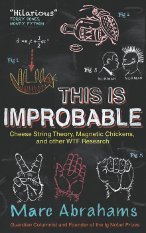 The Observer published a preview —several chunks—of my new book This Is Improbable.
The Observer published a preview —several chunks—of my new book This Is Improbable.
The book will be published on September 6. If you have a keen eye towards the future, you can order copies now.

August 18, 2012
Puzzle of the Disgruntled Children
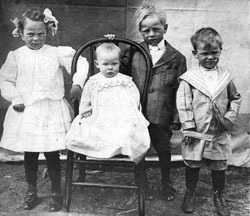 Jin Park writes [AIR 16:2]:
Jin Park writes [AIR 16:2]:
Can anyone help me identify the disgruntled children in this photograph? This is a science puzzle, and I want to know the answer. My professor when I was living in the United States gave me this as a sort of humorous scientific historical gift. He was that kind of professor. It came with a set of clues. He said that three (3) of the children grew up to be famous scientists, one (1) grew up to be a famous international financier and criminal, two (2) are female, two (2) are male, one (1) famously loathed wearing shoes, two (2) were involved with theories about quarks, all (4) excelled at mathematics, and one was involved in a famous quarrel in Paris.
I don’t know who any of them are, or even how to start finding out. That is why I am asking you. It looks to me that at least one of the children is in distress and has to evacuate its bowels soon.

August 17, 2012
Mathematicians who (or that) scare him
 Daniel Look [pictured here], now an assistant professor of mathematics at St. Lawrence University, once created a web page called “Mathematicians That Scare Me” [the link is now dead, alas — was it too scary?]. (A non-mathematician might have phrased it differently: “Mathematicians Who Scare Me”.
Daniel Look [pictured here], now an assistant professor of mathematics at St. Lawrence University, once created a web page called “Mathematicians That Scare Me” [the link is now dead, alas — was it too scary?]. (A non-mathematician might have phrased it differently: “Mathematicians Who Scare Me”.
Below, here, is Look’s posted photo of Kurt Godel.
Kurt Godel is famous for devising the Incompleteness Theorem. Note that this photo of Godel shows only the man’s head and shoulders. It is incomplete.

Antarctica research discovery: A mighty publishing empire
A mighty publishing empire grows (sort of) in Antarctica (sort of).
Investigator Matthias Ehrgott writes: “Some time ago I wrote to you about the Antarctica Journal of Mathematics. It seems the research activity in Antarctica has now considerably expanded to many sub-areas of Engineering, Bio- and Information Technology.” Ergott gave us a copy of this letter, which he has just received:
Dear Engineer, Dr, Professor and Scientist,
1. Antarctica Journal of Bioengineering
2. Antarctica Journal of Biotechnology
3. Antarctica Journal of Civil Engineering
4. Antarctica Journal of Chemical Engineering
5. Antarctica Journal of Computer Engineering
6. Antarctica Journal of Software Engineering
7. Antarctica Journal of Electronics Engineering
8. Antarctica Journal of Electrical Engineering
9. Antarctica Journal of Information Technology
10. Antarctica Journal of Mechanical Engineering
We are charging only $3 per page or equal amount in all currencies, which is very cheap when compared to some other money oriented journals. Further we request you to withdraw your paper from other money oriented journals and submit to our journals.
Sincerely Yours,
M.K.R.S. VEERA KUMAR
Editor-in-Chief
India

August 16, 2012
Smooth bodywork in cars and women
 Some have asked questions along the lines of : ‘Is smoothness a semiotic resource in which consumption-oriented superficiality interfaces with ideologically gendered images of women and cars on magazine covers?’ Take for example Dr. Mehita Iqani, who is a Senior Lecturer in Media Studies at the University of the Witwatersrand, Johannesburg, South Africa, and who has written a paper addressing such issues. It’s entitled : ‘Smooth bodywork: the role of texture in images of cars and women on consumer magazine covers’. (Social Semiotics, Volume 22, Issue 3, 2012). The author, whose work is rooted in a critical agenda that seeks to engage with questions about how power, the public and identity are manifested and negotiated in media texts and systems in consumer societies in late modernity, points out that “The newsstand is a textured space. In particular, smooth, shiny and glossy materials abound.” And, by way of an online glossy resource, she maintains a dedicated website displaying 36 shiny news-stand photos, as well as faces, bodies, gaps (see photo above), and much more.
Some have asked questions along the lines of : ‘Is smoothness a semiotic resource in which consumption-oriented superficiality interfaces with ideologically gendered images of women and cars on magazine covers?’ Take for example Dr. Mehita Iqani, who is a Senior Lecturer in Media Studies at the University of the Witwatersrand, Johannesburg, South Africa, and who has written a paper addressing such issues. It’s entitled : ‘Smooth bodywork: the role of texture in images of cars and women on consumer magazine covers’. (Social Semiotics, Volume 22, Issue 3, 2012). The author, whose work is rooted in a critical agenda that seeks to engage with questions about how power, the public and identity are manifested and negotiated in media texts and systems in consumer societies in late modernity, points out that “The newsstand is a textured space. In particular, smooth, shiny and glossy materials abound.” And, by way of an online glossy resource, she maintains a dedicated website displaying 36 shiny news-stand photos, as well as faces, bodies, gaps (see photo above), and much more.

(Walnuts + Sperm) vs. (Coke + Sperm)
A new study about the effect of walnuts begs comparison with the Ig Nobel Prize-winning study ”Effect of ‘Coke’ on Sperm Motility“. The new study is:
“Walnuts Improve Semen Quality in Men Consuming a Western-style Diet: Randomized Control Dietary Intervention Trial,” Wendie A. Robbins [pictured here], Lin Xun, Leah Z. FitzGerald, Samantha Esguerra, Susanne M. Henning, Catherine L. Carpenter, Biology of Reproduction, epub August 15, 2012. The authors, at the University of California Los Angeles, explain:
“In a randomized, parallel two-group, dietary intervention trial, 75 gm of walnuts/day added to a Western-style diet improved sperm vitality, motility and morphology in healthy men ages 21–35 years…. This study was funded through a grant from the California Walnut Commission…”

Marc Abrahams's Blog
- Marc Abrahams's profile
- 14 followers






